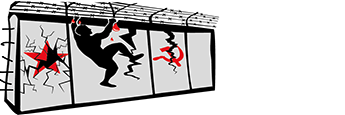Book Review of Alan Philps: The Red Hotel by Patrick van Schie Mr. Jones In the 2019 film Mr. Jones, the Metropol Hotel in Moscow is portrayed as a hotbed of disinformation in the early 1930s. Jones is a recently unemployed British journalist, proud of having interviewed Hitler, and now eager to secure an […]
Publications
Beata Bruggeman-Sekowska In the summer of 1968, Czechoslovakia underwent a remarkable period of political liberalization known as the Prague Spring. Initiated under the leadership of Alexander Dubček, who was elected First Secretary of the Communist Party of Czechoslovakia (KSČ) on January 5, 1968, the reforms sought to implement “socialism with a human face,” introducing unprecedented […]
Beata Bruggeman-Sekowska Forty years have passed since the death of Enver Hoxha (April 11, 1985, in Tirana, aged 76). For more than four decades, he ruled Albania with an iron hand, isolating the country from the rest of the world, enforcing strict ideological control and plunging Albania into extreme poverty. His 40-year rule made him […]
By Patrick van Schie On August 1, 1975, leaders of 35 states – from Europe, the United States, and Canada – gathered in the modernist new Finlandia Hall in Helsinki. There, they signed a document of roughly 22,000 words: the Helsinki Final Act. This Final Act was intended to establish new, improved relations between East […]
Book Review by Patrick van Schie A fine addition to the comprehensive works on communism was published last year by American historian Sean McMeekin: To Overthrow the World. A fitting title, as communism does not merely mean revolution—though never in the form of a spontaneous uprising, but always involving the violence of either a coup […]
De Militaire Spectator, the military-academic journal of the Netherlands Armed Forces — has published the article written by Beata Bruggeman-Sekowska entitled “De leugen als wapen: Katyn en georganiseerde desinformatie” (“The Lie as a Weapon: Katyn and Organized Disinformation”). Eighty-five years after the Katyn massacre, the subject remains strikingly relevant. What the Soviets once called desinformatsija […]
Beata Bruggeman-Sekowska “What should I live for? For this system to kill me slowly and mercilessly? It would be better to end my life at once… There will never be freedom here. Even the word freedom has been forbidden.” These were the final thoughts of Romas Kalanta, a 19-year-old night-school student from Vilijampolė, Lithuania, before […]
Beata Bruggeman-Sekowska The Katyn Massacre refers to the mass execution of over 20,000 Polish military officers, police officers, and intellectuals, carried out by the Soviet NKVD in 1940. This atrocity occurred after both Germany and the Soviet Union invaded Poland in September 1939: Germany attacked from the west on September 1, while the Soviets invaded […]
By Beata Bruggeman-Sekowska On April 13, 1943, the whole world heard about the crime committed by the Soviets. On that day, the Germans announced the discovery of the graves of Polish officers in the forest near Katyn. Three years earlier, in the spring of 1940, nearly 22,000 prisoners of war captured after the Red Army’s […]
Beata Bruggeman-Sekowska On this day, 76 years ago, the Baltic nations endured one of the most harrowing events of the Soviet era. In a calculated attempt to suppress resistance and exert control over the occupied territories, the Soviet Union orchestrated the largest mass deportations in the region. Beginning on March 25, 1949, thousands of individuals-over […]
Beata Bruggeman-Sekowska In the heart of Warsaw, a unique institution is dedicated to saving a forgotten piece of history: neon signs. The Neon Museum is more than just an exhibition space—it’s a tribute to Cold War-era electro-graphic design and an effort to preserve the remnants of the state-driven ‘neonisation’ campaign that once illuminated the […]












Follow Us!